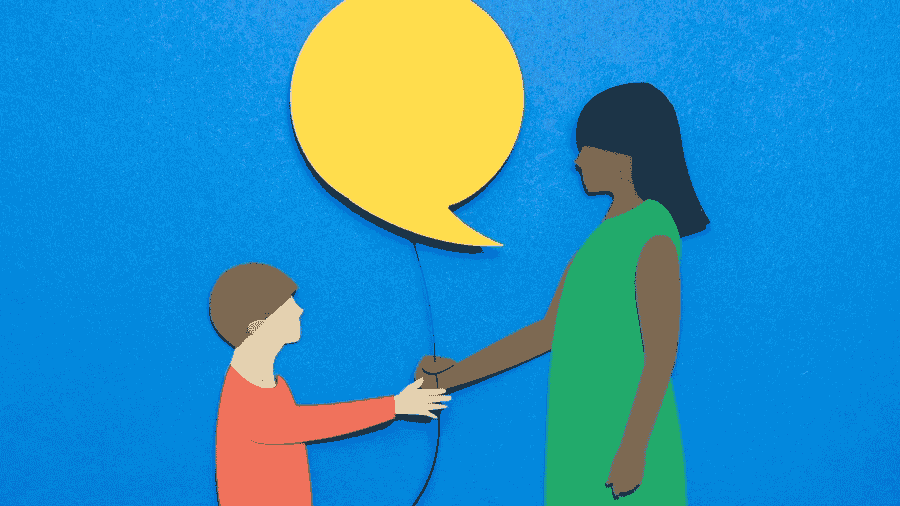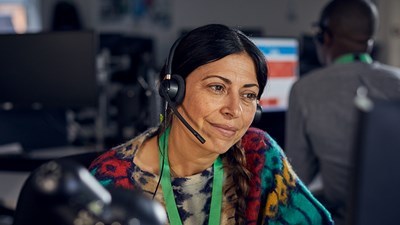We all want children to grow up in a safe, loving environment and become happy, confident adults.
It's important that every child has someone they trust that they can ask for help. You might need to start a difficult conversation because you have to:
- break some bad news
- ask about something you're worried about
- ask about topics you find uncomfortable - like sex or drugs
- ask your child if they're worried or scared by something
- ask your child about a new behaviour.
You might not know how to talk to children about difficult topics.
But whatever the subject, and however old the child you're talking to, you can make it easier for you both.
We have advice to help you decide how to talk to your child in an age-appropriate and supportive way. But you know your child best, so trust your judgement about what’s going to work for them.
Why it's good to talk

There'll be times when children need advice or support.
There’ll also be times when you need to explain something that might upset them.
As their parent or carer, it's up to you to talk to them when you think they need a nudge in the right direction. And to share news or information that’ll affect their lives.
Remember that Childline is always available when they need someone to listen.
Before starting a difficult chat
It’s a good idea to think about where and when’s best to talk.
Where
Do they enjoy one-on-one time out of the house, whether that’s on a walk or in the park? Or would they prefer a private chat at home?
If you're talking to just one child about something, think about how private the time and place are. It might work best to chat at a time when other children aren't around to interrupt.
When
Are they a morning person? Or do they get tired in the evenings? Make sure you’re chatting at a time when you both have the energy for the conversation.
Starting a hard conversation
Make the conversation relevant to them
Buy or borrow a book
Build on school activities
Say a friend of yours needs advice
Keeping the conversation going
It might take time for your child to understand fully – and that's OK.
However you choose to start your conversation, try to keep your expectations realistic. It might not go as well as you hope, but give it time.
Your child might not be ready to talk straight away but could restart the conversation with you a few days later.
It's also best to think about having a few bite-sized conversations over a period of time. It gives your child the time to process what you've discussed and stops the whole thing from sounding like a lecture.
Listening is important too
- Start by asking questions that have more than yes or no answers. This gives your child the chance to tell you what they think.
- Give them as long as they need to answer without interrupting. They may be nervous or still working out what they really think.
- Let your child ask you questions, too. Be honest with them about how you feel about certain subjects and talk to them about things that happened to you in the past.
- Let them know that they can trust you. Reassure them that you want them to talk to you, other people they trust, or organisations like Childline when anything worries them.
When your child wants to start a difficult conversation
- If there is a better time or place, agree on when and where you will talk.
- Begin by reassuring your child that they can tell you anything they need to, and you won't blame them in any way.
- Listen carefully to what they have to say.
- If you don't understand, be honest and ask them to explain.
- Above all, let them say everything they want to say before you give any opinions or advice.
Talking about life-changing topics
- when and where to have the conversation – choose somewhere that will be comfortable for you both
- if you have children of different ages, decide whether you speak to them together or separately
- who else should you tell before your child so they can be ready to give emotional support
- the sorts of questions your child's likely to ask you so you can have the answers ready.
Books to help with your conversations
Books can help you talk to children and young people about sensitive subjects and explore ways to start the conversation.
Our online shop has books on various topics, from gender and sexuality to kindness and mindfulness.
Support for children and young people
Our Childline website has age-appropriate information about lots of different topics like moving, divorce and when someone dies. These pages can help you decide how to approach a conversation, and can provide support for your child after your chat.
Our Childline counsellors are always here to listen to children if they need someone to talk to - by phone, on chat or by email.
Read advice on handling difficult conversations with adults.
You can help us to support more families.
Get more parenting advice
Illustration credits
Top banner and page body illustrations by Sinem Erkas.
Parenting advice row: see individual pages for details.





